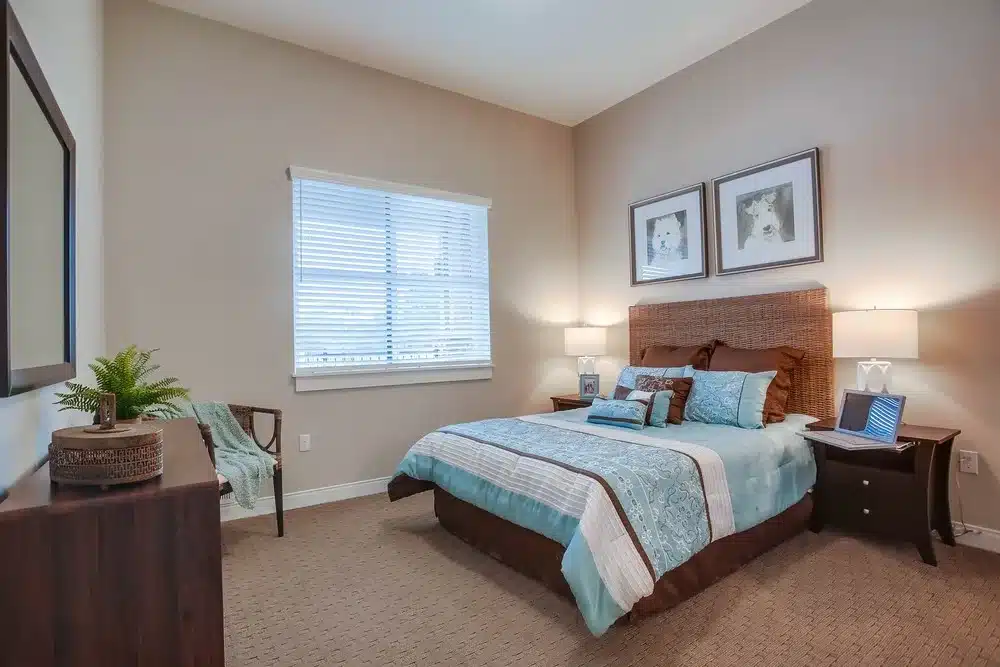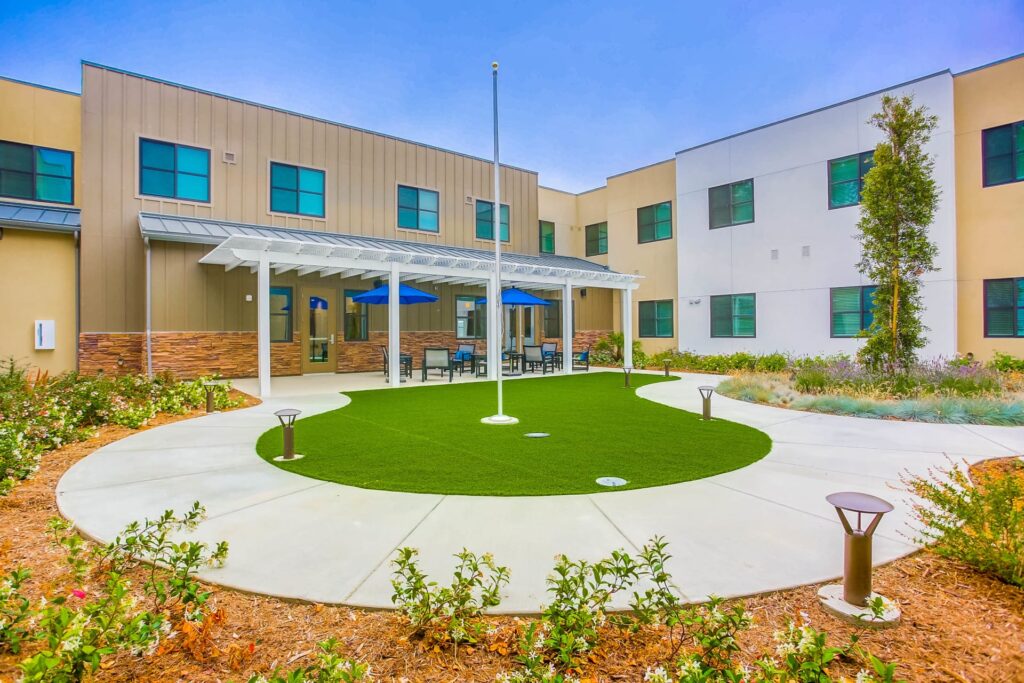Explore the Best Types of Senior Living Facilities
When it’s time to explore your next chapter, understanding the types of senior living facilities available can empower you or your loved one to make informed decisions. Each option offers unique benefits that suit different lifestyles, health needs, and levels of independence.
At Westmont of Encinitas, we proudly provide a range of care levels, from vibrant independent living to personalized assisted living and comprehensive skilled nursing. Whether you’re looking for community engagement or specialized memory support, our campus is equipped to provide high-quality care and comfort.
Explore this guide to learn more about the various types of senior living facilities and discover which option aligns with your evolving needs.
Independent Living: A Vibrant Lifestyle for Active Seniors
One of the most popular types of independent living facilities caters to still active and self-sufficient seniors. If you’re seeking a lifestyle that balances freedom with social opportunity, this may be your ideal path. Residents can enjoy the convenience of services like housekeeping, transportation, and dining while engaging in wellness programs and community events.
At Westmont of Encinitas, our independent living residents participate in fitness classes, social outings, and educational workshops. Community amenities like wellness programs and recreational facilities make daily living enjoyable and maintenance-free.
Assisted Living: Tailored Care With Social Engagement
Assisted living offers just the right support for individuals who need help with daily tasks. These communities blend independence with personal care services, allowing residents to maintain dignity and autonomy while receiving help.
Personalized Assistance Plans
Types of assisted living communities offer services such as bathing, dressing, medication management, and transportation. At Westmont, our team collaborates with families to customize care plans for each resident. These personalized plans are adjusted over time to reflect any changes in health or mobility. Learn more about our 24-hour care and assistance services tailored to each individual.
Community Engagement Activities
Social connection is a cornerstone of our assisted living philosophy. Residents enjoy daily events like game nights, art classes, and educational lectures. By participating in these enriching activities, seniors stay engaged mentally and emotionally. Social activities help prevent loneliness and build a sense of belonging within the community.
How Do The Costs Of Moving Into A Quality Senior Care Community Compare With The Costs Of Staying At Home?Compare The Costs of Senior Living vs Staying at Home
Skilled Nursing: Advanced Medical Support
When more intensive care is needed, skilled nursing is one of the most supportive types of elderly care facilities. These settings provide around-the-clock medical supervision and rehabilitation services. At Westmont, our skilled nursing program is staffed with professionals dedicated to your health and recovery.
Residents benefit from:
- 24/7 medical care and monitoring
- Customized rehab plans
- Emotional and mental health support
- Access to health care technologies that improve the quality of care
Skilled nursing is ideal for those recovering from surgery, managing chronic conditions, or requiring long-term clinical supervision.
Memory Support: Compassionate and Secure
Memory support communities are specialized types of elderly care facilities that serve individuals with Alzheimer’s and other cognitive impairments. At Westmont, we’ve created a secure and nurturing environment where residents thrive under the guidance of compassionate, trained caregivers.
Safety Features and Support
Safety is a priority in our memory support program. Enclosed spaces, secure entry systems, and constant monitoring ensure the well-being of every resident. Caregivers are trained to handle cognitive challenges and provide daily support respectfully and patient-centeredly.
Engaging Activities for Residents
Structured activities help stimulate cognitive function and reduce anxiety. From gardening and art to intergenerational visits, these engagements create moments of joy and help residents maintain emotional connections.

Life Plan Communities: Flexibility for Every Stage
Life Plan Communities—also known as Continuing Care Retirement Communities (CCRCs)—offer a continuum of care, making them one of the most flexible types of senior living facilities available. They enable residents to transition between independent living, assisted living, and skilled nursing without relocating to a new campus.
Key features include:
- On-site access to multiple care levels
- Predictable financial planning with bundled services
- Enriching programs and social activities
This model supports long-term well-being and peace of mind, especially for couples with different care needs. Depending on the individual’s requirements, CCRCs often fall within the framework of the 5 levels of care in assisted living.
Understanding the Levels of Care
Navigating the five levels of care in assisted living helps families understand which services align with a senior’s abilities. These levels include:
- Independent Living – full autonomy with community perks.
- Assisted Living Level 1 – minimal assistance with personal care.
- Assisted Living Level 2 – moderate assistance, such as mobility support.
- Memory Support – structured care for cognitive impairments.
- Skilled Nursing – comprehensive medical care and therapy.
Each level offers increasing support tailored to a resident’s evolving needs.
Is Senior Living the Same as Assisted Living?
Many people ask: Is senior living the same as assisted living? Not quite. While assisted living is a specific type of senior care that offers help with daily activities, senior living is an umbrella term that encompasses several housing and care models—like independent living, memory care, life plan communities, and more.
So, all assisted living communities are senior living communities, but not all senior living options offer assistance with daily tasks. Understanding these distinctions can help ensure you or your loved one chooses the right fit.
Choosing the Right Community: Questions to Ask
When comparing the types of senior living facilities, consider:
- How much assistance is needed daily?
- What is the desired social environment?
- Are medical services required on-site?
- How do costs compare across options?
- What services are included in each plan?
Visiting communities, speaking with residents, and reviewing care plans will help you narrow down the best fit for your needs.
Explore resources from the National Institute on Aging and AARP’s Guide to Senior Living for further insight into selecting the right senior housing.
Find Your Future Home With Confidence
Choosing a senior living facility isn’t just about medical support or amenities—it’s about finding a space that feels like home. Whether you’re drawn to the independence of types of independent living facilities, the daily support of assisted living, or the security of memory care, Westmont of Encinitas offers a warm, welcoming environment designed around your lifestyle and values.
Call us today at 760-452-6037 or schedule a tour to see how our community supports every stage of life with compassion and care.
Your journey to the ideal senior living experience begins here.
Dive into the vibrant life our Westmont communities have to offer.Find Where You Belong
Frequently Asked Questions
What is the best type of home for seniors?
The best type of home for seniors depends on their health, mobility, and lifestyle preferences. Independent living communities are ideal for active seniors who want a maintenance-free lifestyle. Assisted living is better for those who need help with daily tasks but still value independence. For those requiring ongoing medical care, skilled nursing or memory care may be more appropriate.
What are the best names for assisted living facilities?
The best names for assisted living facilities are often warm, welcoming, and reflective of comfort and care. Names like “Harmony House,” “Golden Years Residence,” or “Serenity Springs” are popular because they evoke feelings of peace and security. Many communities also use nature-inspired or location-based names. A strong name should convey trust, dignity, and a sense of home.
What is the meaning of CCRC?
CCRC stands for Continuing Care Retirement Community. These communities offer a range of care levels—independent living, assisted living, and skilled nursing—all in one location. This allows residents to age in place without needing to move as their care needs change. CCRCs provide long-term stability, making them a popular choice for seniors planning for the future.
What is another name for an assisted living facility?
Assisted living facilities are sometimes called residential care homes, adult care homes, or senior living communities. The terminology can vary by region, but they all provide personal care services in a residential setting. These homes support seniors who need help with daily activities but do not require full-time medical care. The goal is to maintain independence with the right level of support.
What is the most common living arrangement for older adults?
Older adults’ most common living arrangement is living independently in their own home or apartment. Many seniors prefer aging in place due to comfort, familiarity, and community ties. However, some transition to independent living communities, assisted living, or move in with family as needs change. The choice often depends on health, finances, and available support systems.








